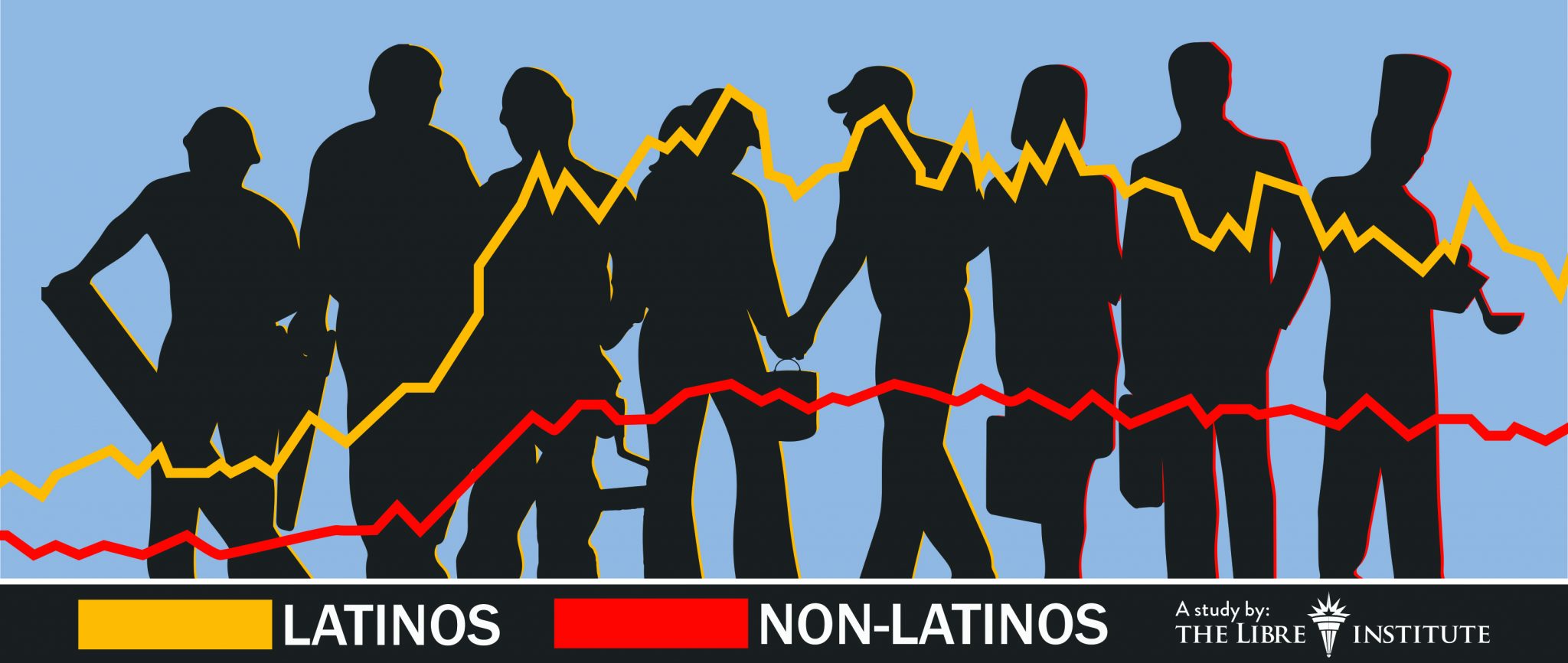As a rapidly growing share of the population and labor force, Hispanics play an indispensable role in strengthening the economy after the most recent recession. Each month, the Bureau of Labor Statistics releases employment data on key indicators that provide a benchmark to measure the state of the economy. This analysis examines how these monthly indicators fluctuated for the U.S. Hispanic community during and after the Great Recession. With this analysis and the charts that follow, it is clear that the Great Recession had a disparate impact on the U.S. Hispanic community, which still continues now several years into the recovery.
The disparate impact is the most clear when it comes to the rate at which Hispanics are forced into part-time work. Before the recession hit, the Hispanic and non-Hispanic rates were tracking each other fairly closely. At the start of the recession, Hispanic individuals were working part-time involuntarily at a rate of 3.25%, while non-Hispanics were at 1.86%. During the recession, the rate at which both Hispanics and non-Hispanics were employed part-time for economic reasons skyrocketed to 7.37%, and 4.26% respectively. However, after the recession officially ended, the rate for Hispanics continued to increase and hovered above 8%, while their non-Hispanic counterparts remained stable around 4%. It is important to note that neither group has returned to pre-recession levels yet.
In addition to the rate of involuntary part-time work, the impacts of the recession are also seen in the unemployment rate. Before the recession, Hispanics and non-Hispanics in the U.S. experienced unemployment at roughly the same rates. For example, in October of 2006 there was just 0.3% separating the two figures. However, after the onset of the recession that gap increased almost tenfold: a difference of 2.86% by the end of the recession. There are similar patterns when examining the experience based on gender and age, which this analysis goes into further. The discrepancy in the unemployment rate between the two groups dramatically shows how Hispanics experienced the Great Recession.
In addition to the unemployment rate, the participation rates of non-Hispanics and Hispanics also suggest a different experience for Latino workers. The U.S. Hispanic community has always demonstrated a higher labor force participation rate than the nation as a whole, which signals a strong desire to contribute and find employment despite hurdles. During the years of 2006 – 2015, Hispanic men had the highest participation rate out of all categories – topping out at 81.4% in
December of 2006, about a year before the recession officially began. At the low end of the spectrum, however, are Hispanic women, who actually have a lower participation rate than non-Hispanic women.
A final example of the difference in the experience between Hispanic and non-Hispanic workers is the rate of long-term unemployment. Before the recession, the two indicators tracked each other extremely closely; there were even months where Hispanics were faring better than their non-Hispanic counterparts. During the recession, both groups got worse but also at approximately the same rate. The troubling part of this indicator is that post-recession, Hispanics started to slip away from non-Hispanics. The gap more than doubled between the two, going from a difference of 1.39% at the beginning of the recession to a difference of 3.11% by the end. The good news is that the trend seems to be improving, but it has not returned to pre-recession levels for either group.
The charts and analysis that follow more deeply illustrate that Hispanics have been acutely affected by the recession. There are several possible economic reasons why this is the case, as future studies will continue to address. Regardless of the underlying reasons why the U.S. Hispanic community is not faring as well as their non- Hispanic counterparts since the beginning of the recovery, it is time for policymakers to take more seriously the fact that Latinos in the U.S. are not feeling the benefits of the recovery.
